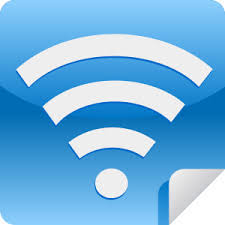Wi-Fi gets a dose of QoS
Spanning all flavors of Wi-Fi, new Wi-Fi Alliance certification program brings standardized approach to traffic prioritization, with focus on apps such as AR/VR, videoconferencing and online gaming.

The Wi-Fi Alliance has kicked off a new certification program that brings a standardized approach to traffic prioritization when traffic demands exceed the available bandwidth on the network.
As a QoS-related step beyond Wi-Fi's traditional equal priority access approach, the new certification program centers on enabling Wi-Fi devices, applications and network managers to prioritize traffic flows, ensuring that traffic for real-time applications and services is inserted into queues with higher priority.
This new Wi-Fi QoS Management capability benefits all generations of Wi-Fi, including Wi-Fi 6, and can operate in all spectrum bands supported by Wi-Fi, including spectrum in the 6GHz band, Kevin Robinson, SVP of marketing for the Wi-Fi Alliance, explained in an email exchange with Light Reading.
The Wi-Fi Alliance said the QoS management capability aligns with IETF recommendations for QoS mapping, as it introduces two new technologies: Differentiated Service Code Point (DSCP) mapping and Mirrored Stream Classification Service (MSCS).
DSCP mapping is designed to align treatment between wired and wireless networks to ensure consistent QoS treatment between them. It also enables network managers to configure specific QoS policies. Meanwhile, the MSCS technology enables client devices to request the access point to apply specific QoS treatment of downlink IP data flows using QoS mirroring.
Specific applications that will be a good early fit for Wi-Fi QoS Management include those that require low jitter and low latency, including AR/VR, videoconferencing and online gaming, Robinson explained.
Wi-Fi QoS Management, he added, will generally benefit clients and access points. But app developers – particularly those involved with QoS-sensitive apps – and OS vendors are expected to use the new MSCS capability to enable an application to request specific QoS treatment.
An initial wave of Wi-Fi chips from Broadcom, Intel and Qualcomm Technologies are already certified and more are expected to be added to the mix now that the new QoS-focused certification program is available, according to the Wi-Fi Alliance.
Other Wi-Fi ecosystem vendors touting support for the new QoS management element include AirTies, Assia, CommScope and ON Semiconductor.
The cable industry has been particularly partial to using Wi-Fi in metro networks and in the home, including inside some new wireless set-top boxes, along with support for specific enhancements and advancements to the standard.
CableLabs, for example, introduced a "Dual Channel Wi-Fi" open source project in 2019 to allocate dedicated channels for specific applications that require lots of bandwidth or low latencies. Rather than requiring all upstream and downstream traffic to flow over one channel, the Dual Channel Wi-Fi approach sets up one or more adjacent, downstream-only channels that can be configured for certain defined traffic types and apps such as OTT video.
Related posts:
— Jeff Baumgartner, Senior Editor, Light Reading
About the Author(s)
You May Also Like












